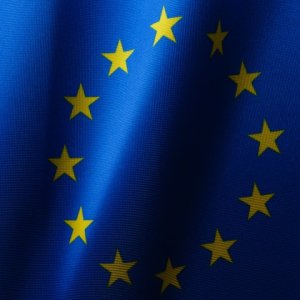Successful Entrepreneurship Is Not Always a Eureka Moment

STORY INLINE POST
Innovation is the practical implementation of ideas that results in the introduction of a new or better product. While it may take the form of a eureka moment by a brilliant mind, innovation is often an evolution and adaptation of ideas. In today’s connected world, where ideas can be shared more easily, one of the most efficient ways to innovate is to build on existing solutions and adapt them to local market conditions. The challenge is knowing where to look – be it to source for new partners or for new markets where there is demand.
While mature and more developed markets like the US, Europe and certain parts of Asia remain attractive to many, solutions borne to solve challenges in emerging markets are less practical for them. Instead, we encourage companies to look at the complementarities and similarities with other emerging regions where solutions may be more easily adapted.
At Enterprise Singapore, we see clear parallels between Southeast Asia and Latin America, where the common dynamics are fertile ground for us to co-learn and co-develop solutions to build stronger and more agile economies that are able to anticipate tomorrow’s needs. Both regions possess a family and food-oriented culture that value personal relationships before venturing into business, unequal wealth distribution (based on a high Gini Index), high unbanked populations, and uneven access to infrastructure. At the same time, both are close to large demand markets – the US for Mexico and China for Southeast Asia. With largely similar challenges and dynamics, there are opportunities to leverage comparative solutions in Southeast Asia and Latin America.
Parallels between the business and innovation landscapes in Southeast Asia and Latin America are evident through the unicorns that have recently been brought to the fore in Mexico and Singapore:
- CARRO, Southeast Asia’s largest artificial intelligence-driven car marketplace, providing shoppers with transparency, quality assurance, financing; offers a similar solution to KAVAK in Mexico.
- Clip, a smartphone-based digital payment aggregator that works as a POS (Point of Sales) in Mexico; has elements that are similar to NIUM, Singapore’s newest fintech platform provider.
- Grab, Southeast Asia’s leading superapp, provides on-demand transport services, payment services and deliveries; much like the growing offering of Rappi in Mexico.
Most importantly, these solutions mitigate similar challenges and are successful case studies of the growing technology and innovation ecosystems in Singapore and Mexico.
Many Mexican entrepreneurs and businesses are now looking beyond the domestic market. Given its strategic location at the heart of Southeast Asia and as a gateway to Asia, Singapore provides a good vantage point to help them understand the trends and dynamics of the region. Ranked top in Asia in the Global Innovation Index, Singapore is home to a diverse pool of ecosystem partners with more than 190 incubators and accelerators, as well as established institutes of higher learning and research institutes. Over the last decade, entrepreneurial activity in Singapore has multiplied severalfold and the city-state is now home to about 3,800 tech startups. It is also a great place to look for financing, with over 220 venture capital firms actively investing in Singapore-based startups. Just in the first half of 2021, tech startups here have closed 355 deals amounting to close to US$3.9 billion, an increase from the same period in 2020, which saw 317 deals amounting to US$2.7 billion.
We see clear opportunities for some of these proven solutions developed in Singapore to contribute to Mexico’s growing sectors. For example, in the digitalization of banking processes (Taiger), in improving the track and trace of products (Dimuto) or in enhancing the tourist attraction offering (BeMyGuest). We also see potential opportunities in B2B solutions for the manufacturing industry, with a special focus on the growing demand for Industry 4.0 solutions – an area that is expected to flourish given the new USMCA. There is also important interest in medical solutions that use cutting-edge technology to diagnose eye diseases or diabetes, such as (EyRIS), as well as companies that can help the food industry become more sustainable through advanced food manufacturing (Sophies Bionutrients, Next Gen Foods) and improved packaging (AlterPack).
Whatever your area of interest might be, an efficient way to drive innovation is through partnerships with local companies, be it as a Singapore company looking to enter the Mexican or Latin American market or Latin American companies looking to expand into Asia through Singapore.
Enterprise Singapore is keen to connect Mexican companies to partners within the Singapore ecosystem. You can start by accessing our database of startups at www.startupsg.gov.sg, or reach out to us and we will be happy to organize pitching competitions to find solutions to your problem statements. Or simply join us at the upcoming Singapore Week of Innovation and Technology (SWITCH), where you will have the opportunity to connect to industry leaders, entrepreneurs, creators, accelerators and investors from the Global-Asian innovation ecosystem, from Nov. 8-12. To find out more, visit www.switchsg.org.
Francisco Rios is Regional Group Director for Latin America at Enterprise Singapore, where he champions enterprise development and the internationalization of Singapore-based businesses in Latin America. Francisco_rios@enterprisesg.gov.sg
























